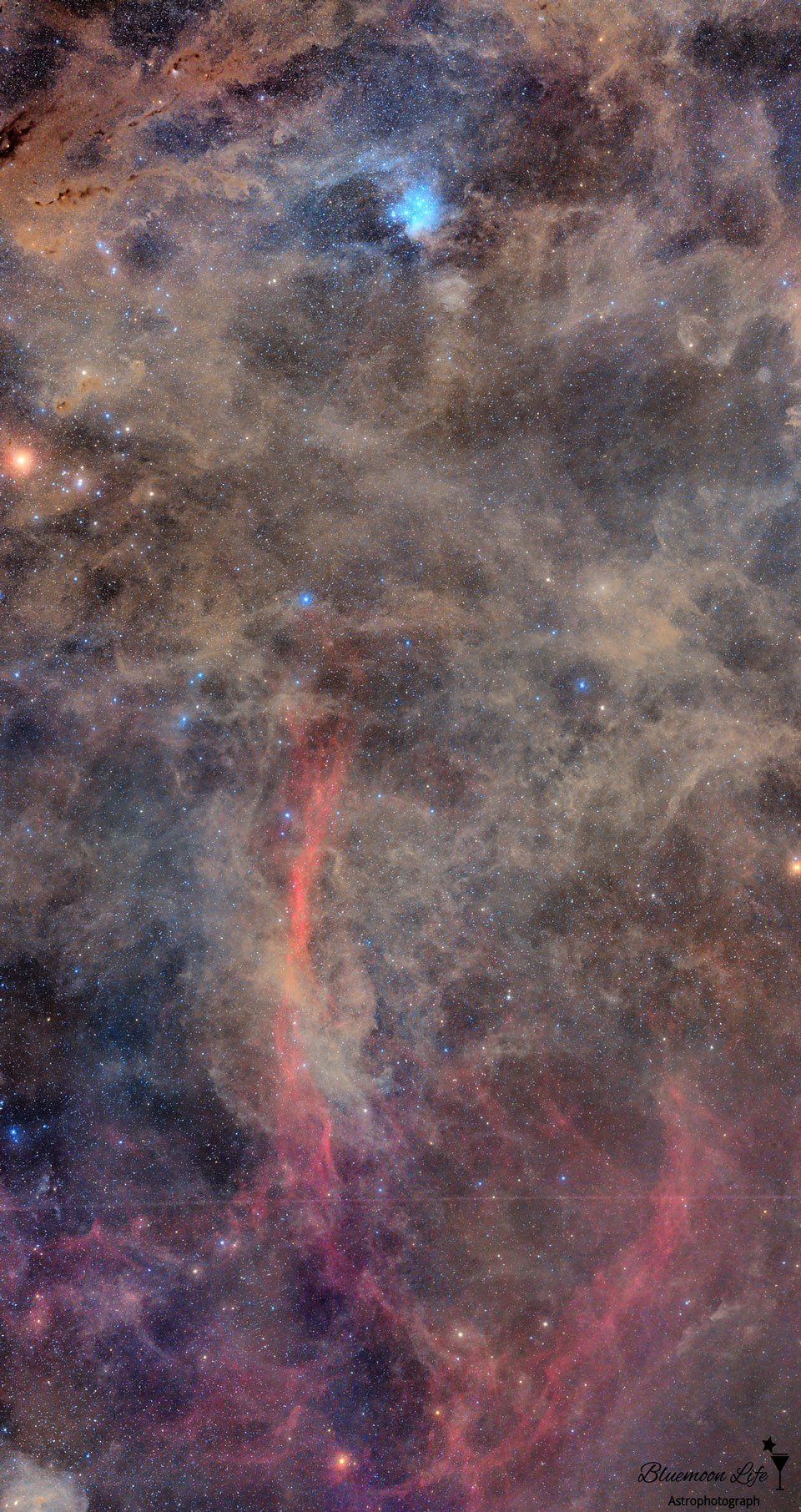2020 March 23
From the Pleiades to the Eridanus Loop
Image Credit & Copyright: Hirofumi Okubo
Explanation: If you stare at an interesting patch of sky long enough, will it look different? In the case of Pleiades and Hyades star clusters — and surrounding regions — the answer is: yes, pretty different. Long duration camera exposures reveal an intricate network of interwoven interstellar dust and gas that was previously invisible not only to the eye but to lower exposure images. In the featured wide and deep mosaic, the dust stands out spectacularly, with the familiar Pleaides star cluster visible as the blue patch near the top of the image. Blue is the color of the Pleiades’ most massive stars, whose distinctive light reflects from nearby fine dust. On the upper left is the Hyades star cluster surrounding the bright, orange, foreground-star Aldebaran. Red glowing emission nebula highlight the bottom of the image, including the curving vertical red ribbon known as the Eridanus Loop. The pervasive dust clouds appear typically in light brown and are dotted with unrelated stars.
Almost Hyperspace: Random APOD Generator
Tomorrow’s picture: black hole shredder
从昴宿星团到波江圈
影像提供与版权: Hirofumi Okubo
说明: 如你凝视一片有趣的天区够久,它看起来是否不同?如以昴宿星团、毕宿星团、及其周遭的区域为例,肯定是截然不同。相机的长曝光影像显示,其内有错综复杂且相互纠缠的网络状星际尘埃和气体云,而这些都是肉眼和短曝光影像见不到的。在这幅高度突显此区域尘埃的宽视野深空组合影像里,我们熟悉的昴宿星团是顶端的泛蓝斑块。蓝色是昴宿星团最大质量恒星的色泽,然后它特征性的星光,进一步受到邻近微细尘埃的反射和强化。影像上左缘附近的毕宿星团,则环拱着亮橙色的前景恒星毕宿五。影像底端最突出的天体,是泛红的明亮发射星云,包括彩带状向上弯折的波江圈。影像里无所不在、色泽通常是淡棕的尘埃云,间杂着许多与其并无关联的恒星。
Almost Hyperspace: Random APOD Generator
明日的图片: black hole shredder








虽然这张图很美好啦,不过昴宿星团和毕宿星团集中的地方是金牛座右下部分,这张图往下包含波江座的部分只有一角,其中还包含了另一个鲸鱼座的一部分头部
世间最美好的温柔都在浩瀚纯洁的宇宙里